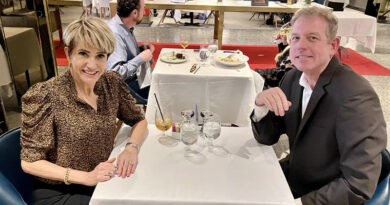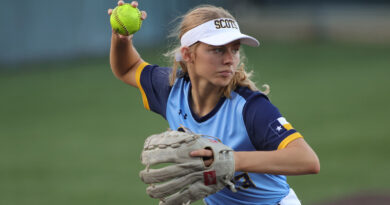Girl Power: Meadows Features Female Artists
When a great-nephew of Texas artist Marie Cronin donated a portrait of the painter and some of her work to the Meadows Museum three years ago, it gave curator Nicole Atzbach an idea to highlight female artists.
“In the first years of the 20th century, Marie Cronin went to Paris — then the center of the art world — specifically to establish her career,” Atzbach said. “Within a few decades, two more Texas-based artists, Carlotta Corpron and Janet Turner, were pushing boundaries and influencing countless artists in their respective media of photography and printmaking.”
The museum opened two exhibits Feb. 14 showcasing the three artists’ work. “Between Paris and Texas: Marie Cronin, Portraitist of the Belle Epoque” and “Process and Innovation: Carlotta Corpron and Janet Turner” will run through June 5 as part of the museum’s University Art Collection.
Cronin was born in Palestine, Texas in 1867. When she moved to Paris, France, she sought out well-known Spanish portrait artist Claudio Castelucho and studied with him for five years. During this time, he painted a portrait of Cronin that is on display as part of the Meadows exhibit.
When Cronin returned to Texas she had an established reputation as an artist and was commissioned to paint political figures and statesmen. Six of her paintings hang in the state capitol. After her father died, Cronin took over as president of the family business running Bartlett Western Railway.
“Her story above all is [about] pushing boundaries,” Atzbach said.
The Cronin exhibit is on the second floor and features seven of her pieces, including her painting “Lady in Green,” a 1908 painting of one of Castelucho’s other students.
Corpron and Turner had a different realm and era of influence. The pair, born in 1901 and 1914 respectively, was known for experimenting with their media and changing art education, according to Atzbach. The exhibit, on the first floor of the museum, shows some of the artists’ early mid-century works on loan from collections around Dallas.
Turner’s prints, many of which feature birds, center around research the former Stephen F. Austin University assistant professor conducted on the flora and fauna of the Texas Gulf Coast after getting a Guggenheim Fellowship in 1952. “[Guggenheim Fellowships] are typically given to artists who are mid-career, so it was pretty exceptional that she received it at that point of time,” Atzbach said. “That was the turning point for her.”
Some of Turner’s printing plates are also on display so visitors can observe her artistic process. “[Turner] wanted to elevate printing to a medium on par with painting and I think she achieved that,” Atzbach said.
Corpron was described by Michael Ennis in Texas Monthly in 1983 as “the finest avant-garde photographer Texas has ever seen.” She focused on light manipulation in her photography and called herself a designer, not a photographer, according to Atzbach. “She would have these marathon sessions where she would take mundane objects like eggs or a piece of coral and she would sort of manipulate them,” Atzbach said.
Work from some of Corpron’s students from Texas State College for Women (now Texas Woman’s University) is on display as well; Atzbach says Corpron’s influence is clear. “[Turner and Corpron] both balanced this life between being art educators and being artists, and individually they both changed the way art was taught at their respective institutions,” Atzbach said.








